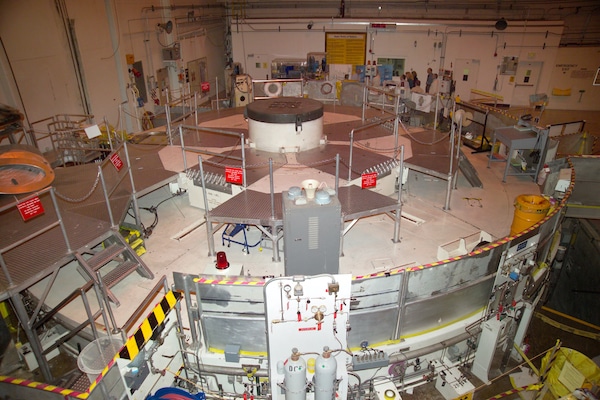COLLIN MACDONALD interviews DR EDWIN LYMAN

Colleen: How do we solve climate change? Ask 100 people and you’ll get 100 answers. And if one of the people you ask is Bill Gates, you might hear that we should turn to nuclear energy to help us reach our climate goals. But while generating nuclear power doesn’t create carbon emissions, it does come with a host of other challenges… like affordability, safety, and the unsolved question of how to safely dispose of nuclear waste.
Almost every nuclear reactor operating today is what’s known as a light-water reactor, because they use ordinary water to cool their hot radioactive core. To try and solve the biggest challenges of nuclear energy, the industry is turning away from light water reactors and looking toward new designs that use other materials to cool the core. The industry calls these new designs quote-unquote advanced reactors and claims they will help us build a clean energy future that’s also safe and affordable.
So… are these claims accurate? Today’s guest is Dr. Edwin Lyman, a physicist and director of nuclear power safety at the Union of Concerned Scientists. He just released the report “Advanced isn’t always better,” an independent review of these new designs that cuts through the hype coming from the nuclear industry. Ed wants to make sure we don’t waste money designing and building reactors that aren’t safe and don’t improve on what we already have.
He explains how today’s nuclear reactors work, what’s different about so-called advanced reactors, and whether or not they deliver on the benefits they promise. Ed also tells us about the Natrium reactor being designed by Bill Gates’ company TerraPower… and what he’d say to Bill Gates if they met at a dinner party.
Colleen: Ed, welcome back to the podcast.
Ed: Thank you for having me again.
Colleen: So, we’ve talked in the past about small modular reactors, the Chernobyl disaster. And today, I want to dig into non-light- water reactors. You just published a technical analysis looking at the safety, security, and environmental impacts of this proposed new suite of nuclear reactors. First off, how are they different from the nuclear reactors that the U.S. currently operates?
Ed: Sure. So, the U.S. currently has 94 nuclear reactors to produce electrical power. And they all use ordinary water as a coolant to remove heat from the hot fuel to convey that heat to a power generation system, which generates steam and produces electricity. These reactors have a main characteristic as they don’t use water to cool the fuel, but they use other substances. For instance, you can use a liquid metal like liquid sodium as a coolant, or you can use a gas like helium, or in some cases, the fuel cools itself as a liquid and it cools itself.
Colleen: So, can you run through the new advanced reactors that you evaluated?
Ed: Yes. The first main class of reactors is called fast reactors. And these differ from our existing fleet because they don’t have materials that slow down neutrons. So, when a nucleus of uranium fuel is fissioned, it’s struck by a neutron and it’s split apart, and it releases energy and other neutrons. And those other neutrons will then strike other uranium nuclei, and you have what’s called a chain reaction. And that generates a steady level of heat which can then be used to produce electricity. That’s how the nuclear reactors work.
But in the water-cooled reactors that we have now, those water molecules actually slow down the neutrons. So, when a neutron is produced by fission, it has a certain energy. But as it collides with water molecules, it slows down. It turns out that makes it…essentially, that makes the fission reactions more efficient. So, you can use less concentrated fuel. So, that’s a certain approach to designing a nuclear reactor that we use today.
Monthly Review Online for more
